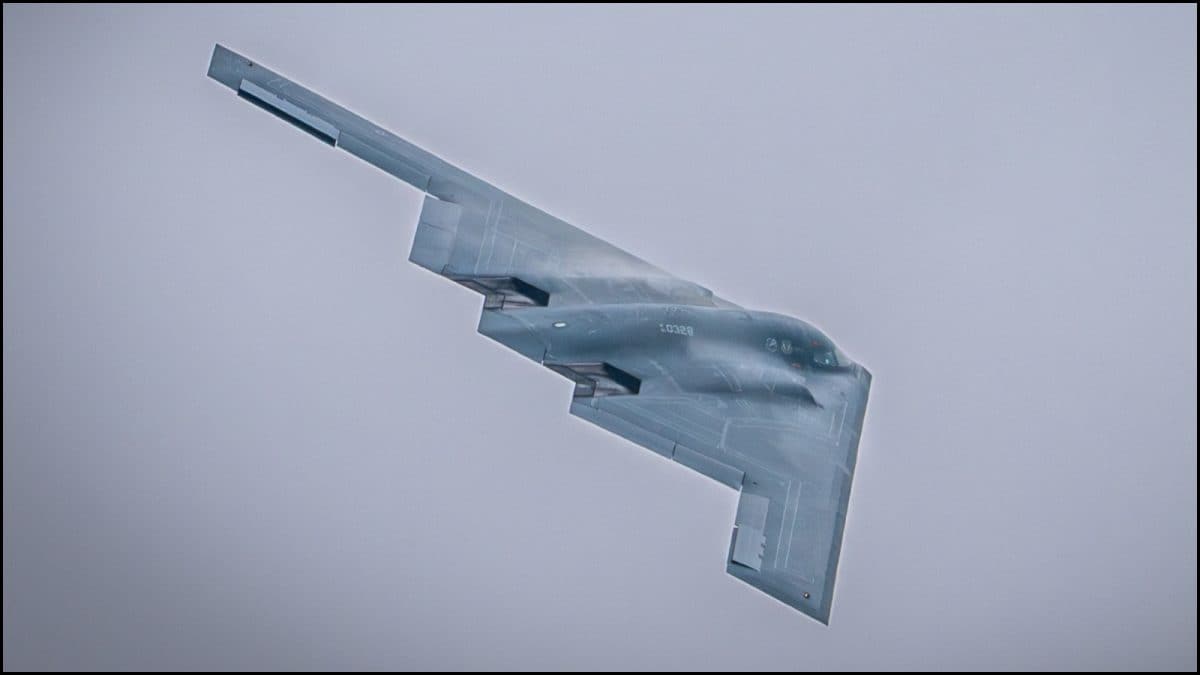ARTICLE AD BOX
Last Updated:June 22, 2025, 07:30 IST
Beyond its stealth features, the B-2 also possesses exceptional operational capabilities. It can fly up to 6,000 nautical miles without refueling

B-2 stealth bombers (Representative image)
In a dramatic escalation of Middle East tensions, the United States has entered the Israel-Iran conflict by launching a military strike on three nuclear sites in Iran. The assault began with six Bunker Buster bombs targeting the underground Fordow facility, followed by 30 Tomahawk missiles hitting Natanz and Esfahan. FOLLOW LIVE UPDATES
Announcing the operation, US President Donald Trump confirmed that B-2 stealth bombers carried out the attacks. He described it as a “historic moment" for the US, Israel, and the global community, asserting that the strike marked a decisive step in the ongoing regional crisis.
Also Read: Trump Announces US Strikes On 3 Nuclear Sites In Iran As Tensions Escalate: ‘Fordow Is Gone’
What Is The B-2 Stealth Bomber?
The B-2 Spirit, commonly known as the B-2 stealth bomber, is a groundbreaking aircraft that has served as a cornerstone of American airpower and stealth technology for more than 30 years. Developed by Northrop Grumman, the B-2 represents a fusion of cutting-edge design, advanced engineering, and unrivaled battlefield survivability.
First taking to the skies in 1989, the B-2 remains one of the most formidable and survivable strategic bombers in the world. It was specifically engineered to penetrate dense and sophisticated enemy air defense systems, allowing it to strike heavily fortified targets with minimal detection risk.
At the heart of its power is its stealth capability. The B-2’s distinct flying-wing design, combined with radar-absorbent materials and a significantly reduced infrared and acoustic signature, makes it nearly invisible to conventional radar. Its radar cross-section is estimated at just 0.001 square meters, roughly the size of a small bird, making it one of the most elusive aircraft ever built.
Also Read: ‘We Will End It’: Iran Says All Americans In Region Now A Target After US Strikes Its Nuclear Sites
Beyond its stealth features, the B-2 also possesses exceptional operational capabilities. It can fly up to 6,000 nautical miles without refueling, and its range can be further extended through aerial refueling, enabling long-duration missions deep into hostile territory. The aircraft is designed to operate effectively at all altitudes, including high-altitude strategic missions, and is capable of carrying a massive payload comprising both conventional and nuclear weapons. This combination of range, altitude flexibility, and strike capacity makes the B-2 one of the most versatile and powerful bombers in modern military aviation.
Why Did Trump Deploy the B-2 Bomber in Iran?
The deployment of B-2 stealth bombers to the Pacific island of Guam over the weekend fueled intense speculation about a potential US military strike. Analysts and observers began anticipating a significant escalation, particularly involving Iran’s nuclear infrastructure.
Among the concerns was the possibility that the Trump administration intended to use the 30,000-pound Massive Ordnance Penetrator—commonly known as a bunker-buster bomb—to strike Iran’s heavily fortified underground uranium enrichment facility at Fordow. Given the B-2’s unique ability to deliver such powerful munitions while evading advanced radar systems, its movement signaled a deliberate and calculated show of force, raising tensions and uncertainty about the US’s next steps in the region.

Covering day-to-day national and international news for the last nine years across print and digital. Associated with News18.com as Chief Sub-Editor since 2022, covering innumerable big and small events, includ...Read More
Covering day-to-day national and international news for the last nine years across print and digital. Associated with News18.com as Chief Sub-Editor since 2022, covering innumerable big and small events, includ...
Read More
- Location :
- First Published:
News world What Are B-2 Bombers And Why Did The US Use Them To Strike Nuclear Sites In Iran?



.png)
.png)
.png)
















 3 hours ago
6
3 hours ago
6









 English (US) ·
English (US) ·